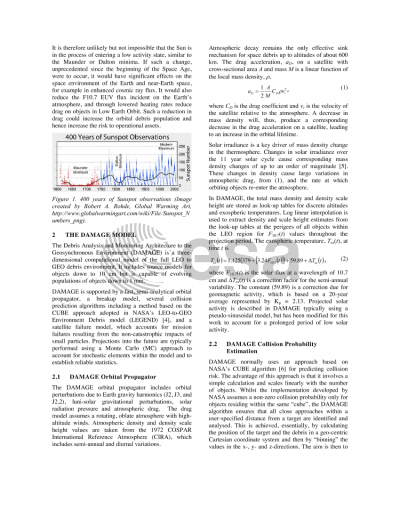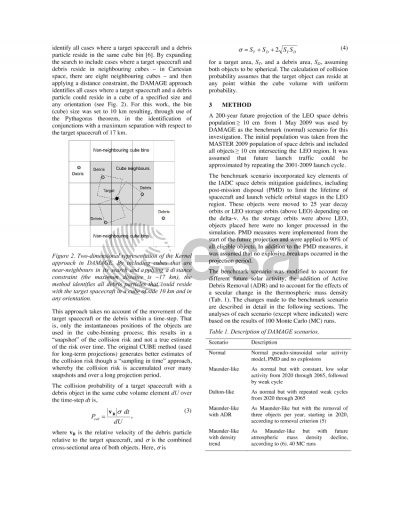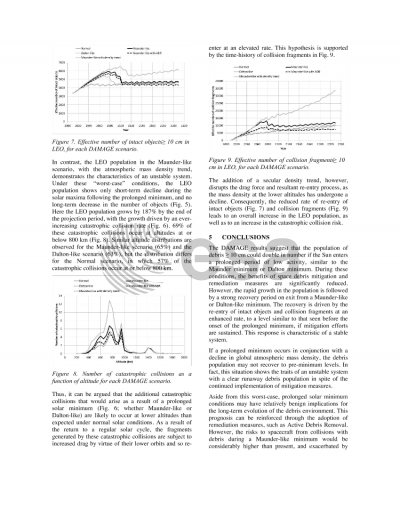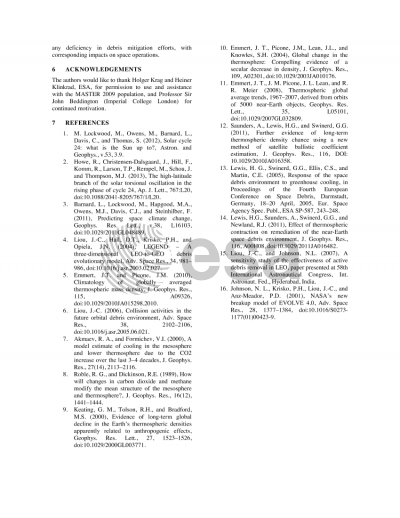Document details

Abstract
Observations of the current solar cycle show the likely continuation of a long-term decline in solar activity that began during the 1980s. This decline could lead to conditions similar to the Maunder minimum within 40 years [1], which would have consequences for the space debris environment. Solar activity is a key driver of atmospheric mass density and, subsequently, drag on orbiting spacecraft and debris. Whilst several studies have investigated potential effects on the global climate, no assessment has been made of the impact of a Maunder-like minimum on the space debris population in Low Earth Orbit (LEO). Consequently, we present a new study of the future debris environment under Maunder minimum conditions and provide an assessment of the possible consequences to the LEO space debris population and space operations. The University of Southampton's Debris Analysis and Monitoring Architecture to the Geosynchronous Environment (DAMAGE) has been used to analyse the consequences of a Maunder minimum of approximately 50 years duration and to quantify the impact on the effectiveness of debris mitigation measures. Results from these studies suggest an increase in collision activity and a corresponding, rapid growth of the debris population during a Maunder minimum period, in spite of on-going mitigation efforts. In the best case, the DAMAGE results suggest that the population of debris > 10 cm could double in number by the end of Maunder minimum conditions. However, the rapid growth in the population is followed by a strong recovery period on exit from a Maunder minimum. The recovery is characterised by a decrease in the debris population, which can be to a level similar to that seen before the onset of the Maunder minimum, if mitigation efforts are sustained. As such, prolonged solar minimum conditions may have relatively benign implications for the long-term evolution of the debris environment. However, the risks to spacecraft from collisions with debris during a Maunder-like minimum would be considerably higher than present, and exacerbated by any deficiency in debris mitigation efforts, with corresponding impacts on space operations.
Preview








